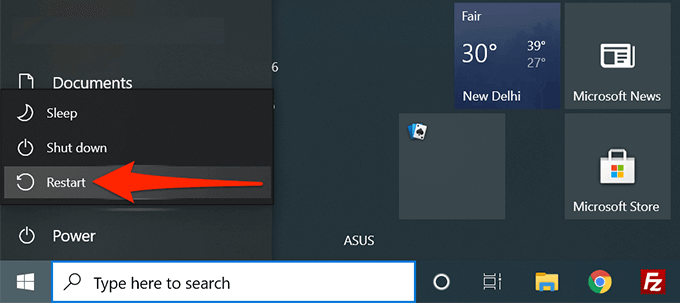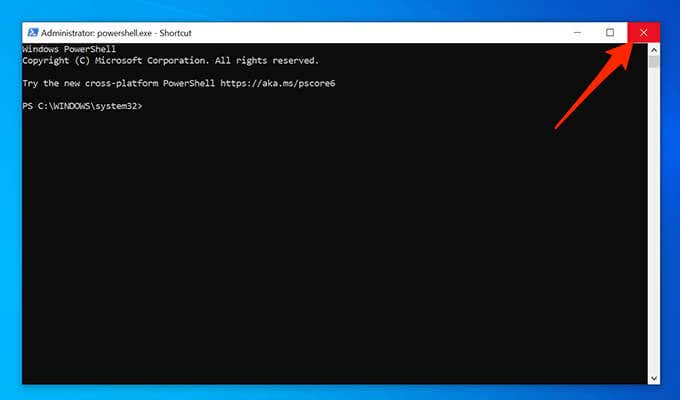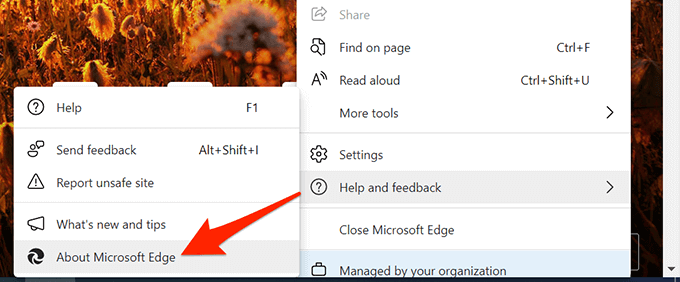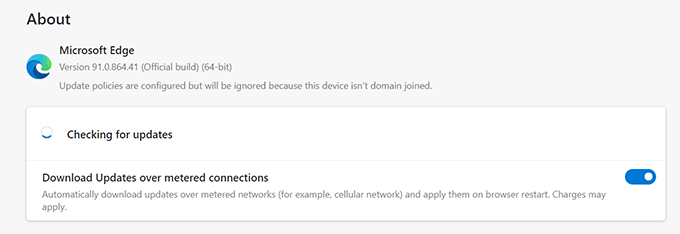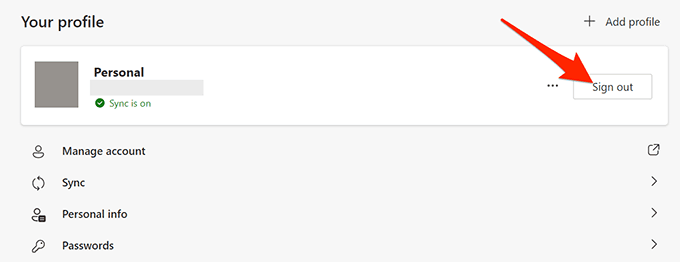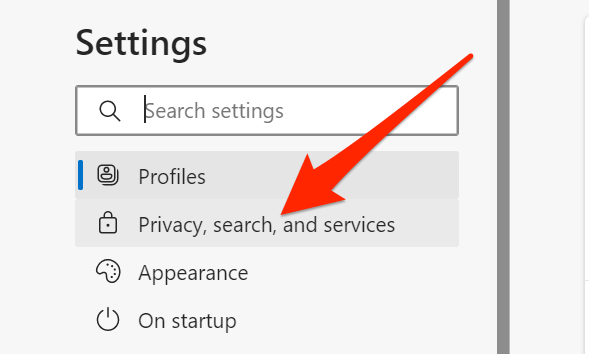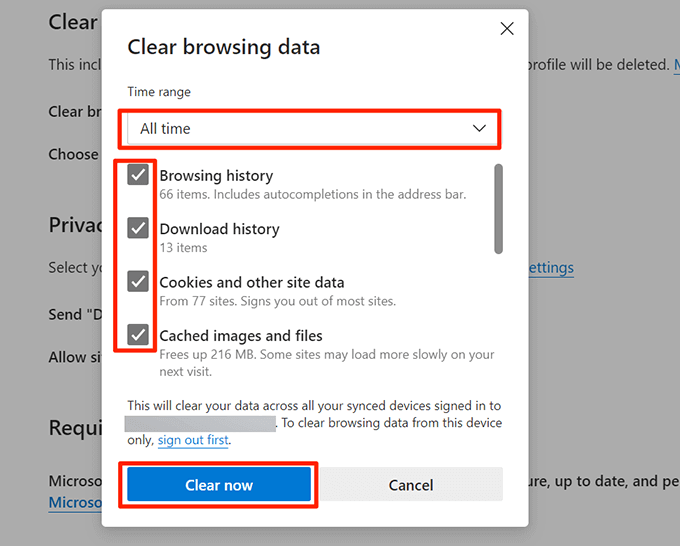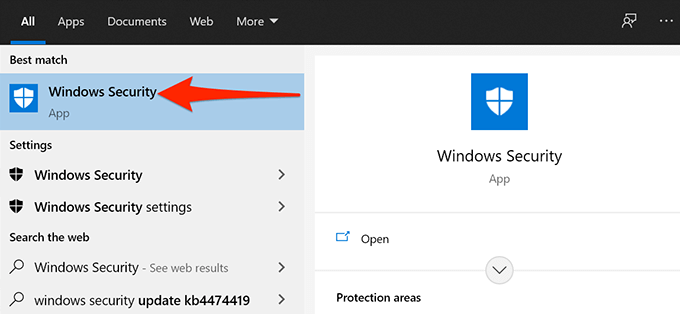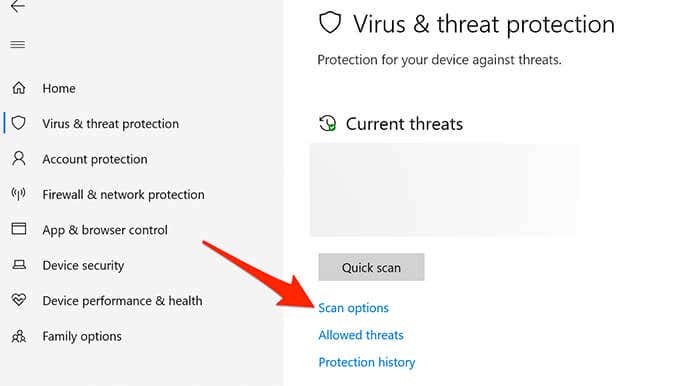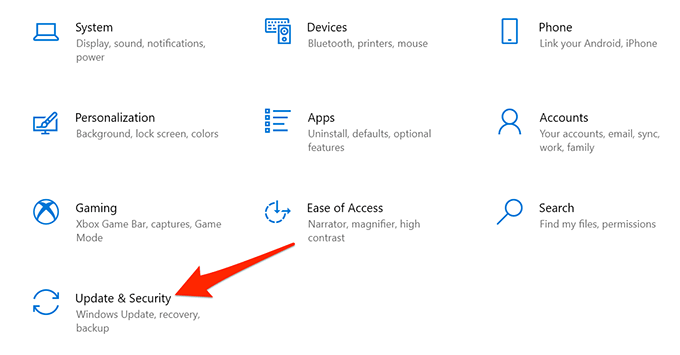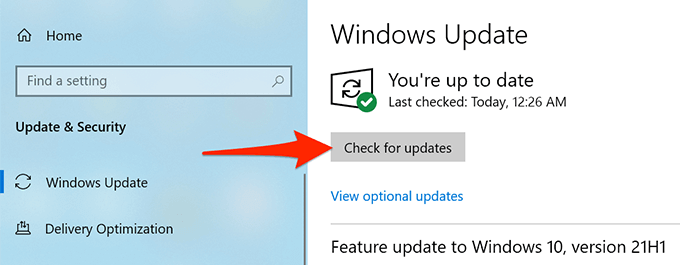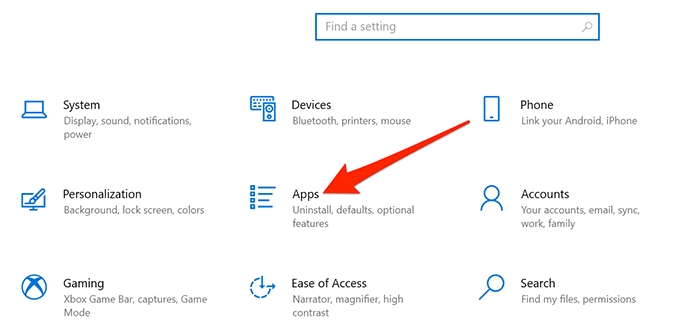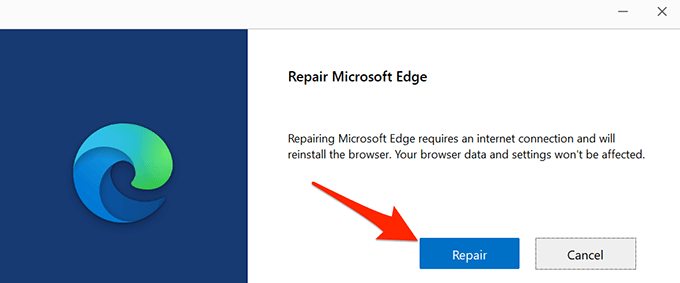We list all the steps you can take
While Microsoft Edge is a reliable web browser, there are instances when it crashes or refuses to open, interrupting your browsing sessions.
If you rely on Edge for your web browsing sessions, you might want to look into how to repair Microsoft Edge on your Windows 10 PC to make your browsing experience smooth and efficient.
Reboot Your PC
Rebooting your PC is an easy way to fix many issues in Windows 10 as it resets many temporary settings.
To reboot Windows PC, open the Start menu, select the power icon, and select Restart.
When your PC boots back up, launch Microsoft Edge and see if it works.
Close Edge Tabs and Running Apps
One of the reasons Edge crashes or refuses to open is that it doesn’t have adequate computer resources to function. You may want to close all open tabs and apps running on your PC. This frees resources that Edge can then use to resume normal functions.
- To close a tab in Microsoft Edge, select X next to a tab. Do this for all your tabs except for the one you wish to keep open.
- To close running apps on your PC, select X at the top-right corner. Repeat this for all running apps on your PC.
- Reload your tab in Edge and see if the browser works correctly.
Update Microsoft Edge
Keep Microsoft Edge updated with newer browser versions to ensure that it has all the latest bug fixes and patches for existing issues. This is one of the most common and easiest ways to repair Microsoft Edge.
While Windows 10 updates Microsoft Edge automatically, you can manually check and install available updates:
- Open Microsoft Edge on your PC.
- Click the three-dots menu at the top-right corner and select Help and feedback > About Microsoft Edge.
- Edge will automatically start downloading and installing any available updates.
- Upon installation, select the Restart button to bring the updates into effect.
Clear Microsoft Edge’s Browsing Data
When you use Microsoft Edge to surf websites, make online purchases, and create website accounts, your browser saves all this information locally as temporary files. Sometimes, this saved information causes Edge to crash and not open correctly.
You can clear all the data saved in the browser to repair Microsoft Edge. This includes removing your browsing history, download history, website cookies, cached image files, etc.
Note: If you delete your Edge data, it will be removed from all your devices where you use the same account linked to Edge on your PC. If you don’t want this to happen, sign out from Edge on your PC before clearing the data using the steps below.
- Open Microsoft Edge on your PC.
- Select the three-dots menu at the top-right corner and choose Settings.
- Select Privacy, search, and services from the left sidebar.
- Scroll down the right pane to the Clear browsing data section and select the Choose what to clear button.
- In the pop-up window, select All time from the Time range dropdown menu at the top.
- Check all of the options shown in this window. Make sure to scroll down so you can check all options.
- Select Clear now at the bottom to clear your Edge data.
- Relaunch Edge and see if it works properly.
Scan Windows 10 for Viruses and Malware
If a virus infects your Windows 10 PC, it may cause Edge to crash or not load correctly. Windows 10 includes the Microsoft Defender Antivirus tool that you can use to get rid of viruses and malware from your computer.
Run a virus check with this antivirus program, remove the viruses that are found, and Edge should work on your PC:
- Close Microsoft Edge if it’s running on your PC.
- Open the Start menu, search for Windows Security, and select Windows Security from the search results.
- Select Virus & threat protection.
- Select Scan options.
- Select the Full scan option.
- Select Scan now at the bottom to start scanning your PC. This can take a while.
Update Windows 10
Keep your PC updated with the latest Windows updates to ensure optimum performance and a bug-free experience with Edge.
Windows 10 makes it extremely easy to download and install new updates. You can perform the following Edge repair procedures on your PC easily.
- Press Windows + I to open the Settings app. Alternatively, open the Start menu, search for Settings, and select Settings.
- In Settings, select Update & Security at the bottom.
- Select Windows Update on the left sidebar.
- Select Check for updates on the right pane and let Windows find new updates.
- If an update is available, install it on your PC.
- Restart your PC once the update is installed.
- Open Edge and see if it works as intended.
Repair Microsoft Edge
If the methods above don’t work, you can use Windows 10’s built-in Microsoft Edge repair tool to reinstall Edge to fix most of the browser issues. Reinstalling Edge doesn’t delete your browsing data or browser settings. Running this tool requires an active internet connection.
To start repairing Microsoft Edge:
- Press Windows + I keys simultaneously to open the Settings app.
- Select the Apps option
- Select Apps & features from the left sidebar.
- Scroll down the right pane until you see Microsoft Edge.
- Select Microsoft Edge in the apps list and then select Modify.
- In the User Account Control prompt that appears, select Yes.
- A new window opens with the title Repair Microsoft Edge. Here, select the Repair option.
- Wait for the tool to reinstall Edge on your PC.
- After the tool has reinstalled Edge, open Edge and see if you still experience any issues with this browser.
Microsoft Edge should now hopefully be free of any errors on your Windows 10 PC. If this is indeed the case, please let us know what method worked for you in the comments below.



